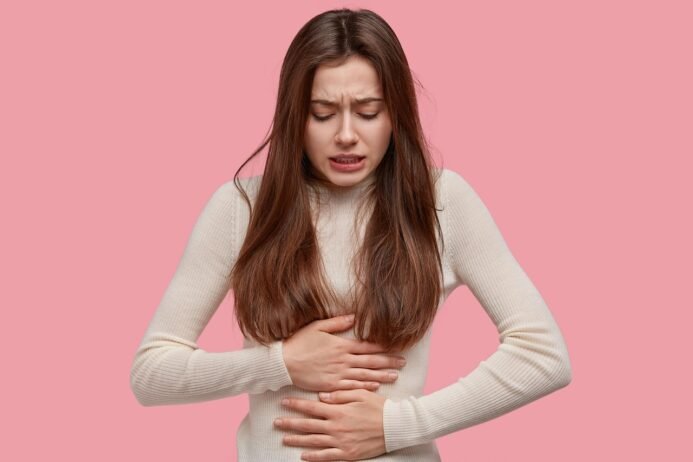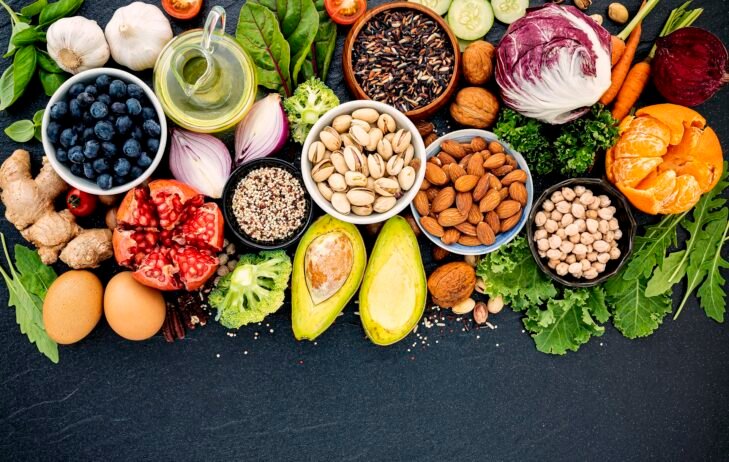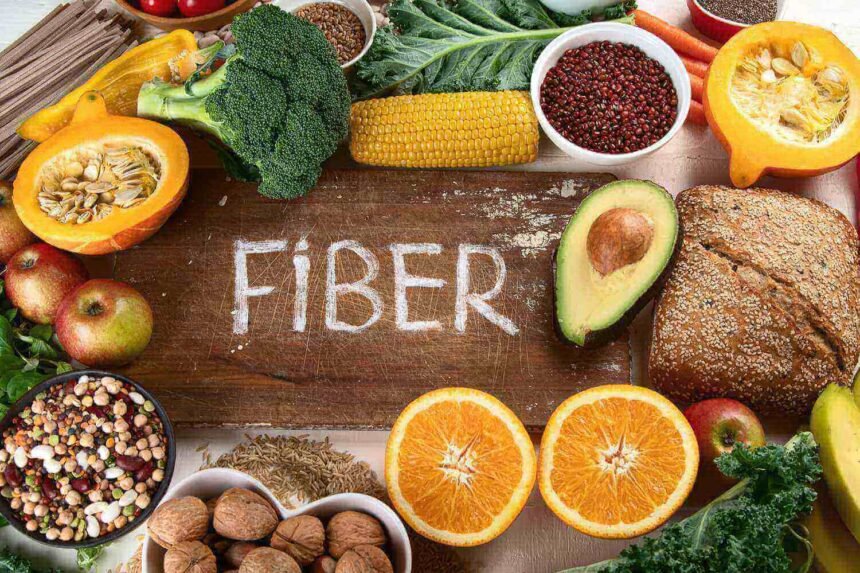In the ever-evolving world of social media wellness trends, “fibremaxxing” (or “fibermaxxing”) has exploded onto TikTok and beyond, captivating Gen Z and millennials with its promise of gut health revolution. But what exactly is this high-fiber craze? Is it a science-backed path to better digestion and longevity, or just another extreme fad that could do more harm than good? In this blog, we’ll break down the trend, its origins, benefits, risks, and what experts really think—drawing from nutritionists, dietitians, and health professionals weighing in on the viral phenomenon.
What Is Fibremaxxing?
Fibremaxxing is a TikTok-born trend that encourages people to “max out” their daily fiber intake by stacking fiber-rich foods into every meal and snack. Unlike restrictive diets that cut out food groups, this one focuses on adding more whole, plant-based foods like chia seeds, beans, oats, berries, cruciferous vegetables (e.g., broccoli, kale), legumes, nuts, seeds, and whole grains. The goal? To supercharge gut health, improve digestion, stabilize blood sugar, and promote overall well-being—often with a side of weight loss.
The term is part of the broader “maxxing” family, which started with “looksmaxxing” (optimizing appearance through extreme grooming or surgery) and evolved into softer versions like “sleepmaxxing” or “flavormaxxing.” Fibremaxxing gained traction in mid-2025, sparked by creators like 25-year-old Pamela Corral, whose videos of high-fiber chia seed puddings and oat bowls racked up millions of views. Hashtags like #Fibremaxxing and #FibreGoals are now clocking billions of impressions, with users sharing colorful “fiber-stacked” meals: think smoothies blended with spinach and flaxseeds, salads loaded with chickpeas, or yogurt parfaits topped with psyllium husks.
At its core, fibremaxxing isn’t inventing the wheel—it’s rebranding the age-old advice to eat more fiber. Health organizations like the USDA recommend 25–38 grams per day for adults, but most people only get about half that amount. The trend pushes for going beyond, sometimes aiming for 50+ grams, by creatively incorporating fiber into every bite.
The Science Behind High-Fiber Eating: Why It Might Be Revolutionary
Fiber—both soluble (which dissolves in water, like oats and apples) and insoluble (which adds bulk, like wheat bran)—is a non-digestible carb that acts like fertilizer for your gut microbiome. Here’s why experts say ramping it up can be a game-changer:
- Gut Health Boost: Fiber feeds beneficial bacteria, producing short-chain fatty acids (SCFAs) that reduce inflammation, strengthen the gut barrier, and alleviate issues like IBS or constipation. A 2025 study highlighted in wellness discussions links higher fiber to a more diverse microbiome, potentially lowering risks for chronic diseases.
- Blood Sugar and Weight Management: Soluble fiber slows sugar absorption, preventing spikes and crashes—ideal for diabetes prevention. It also promotes satiety, helping with portion control and weight loss without feeling deprived.
- Heart and Longevity Perks: Every 7–10 grams of extra daily fiber can drop heart disease risk by up to 10%, per research cited by dietitians. It lowers cholesterol and supports metabolic health.
- Brain and Mood Benefits: A healthy gut influences the gut-brain axis, potentially easing anxiety and improving mood via serotonin production.
Nutritionists like Lauren Manaker (CNN) and Steph Grasso (ABC News) rave about it: “This is one of the safer nutrition trends I’ve seen,” says Grasso, emphasizing its focus on nutrient-dense foods. Dr. Kyle Staller from Harvard calls fiber an “oldie but goodie” for rising colon cancer rates among young adults. Even gut health expert Dr. Megan Rossi endorses it on X, noting it addresses widespread fiber deficiency.
In a world obsessed with protein, fibremaxxing shifts the spotlight to the unsung hero of diets—fiber—which could extend life expectancy, per some experts.


The Dark Side: When Too Much Fiber Goes Wrong
Not all experts are blindly enthusiastic. While the intent is good, the “maxxing” extreme can backfire. Here’s what critics warn:
- Digestive Drama: Jumping from low to high fiber overnight can cause bloating, gas, cramping, or “fiber dumping” (excessive loose stools). Dietitian Laura Tilt explains that sudden increases ferment in the gut, producing discomfort. In rare cases, mega-doses (60+ grams) risk bowel blockages.
- Nutrient Imbalance: Replacing proteins, fats, or carbs with fiber powders or supplements (as some do) can lead to deficiencies. ScienceAlert warns this “removal of other food groups” poses risks like malnutrition.
- Not for Everyone: Those with IBS, IBD, or fructose malabsorption may worsen symptoms. Nutritionist Toby Amidor (Fox News) stresses: “Health is individualized—if you have GI conditions, adjust first.” Pregnant people or those on certain meds should consult doctors.
- Trendy Extremes: Like other “maxxing” fads, it promotes unsustainable hacks (e.g., chugging fiber shakes), leading to yo-yo habits or disordered eating, per Marie Claire.
Experts like Jordan Hill (Women’s Health UK) advise: “It’s positive for awareness, but don’t go overboard—build slowly.”


Expert Opinions: Good, Bad, or Balanced?
- Pro-Fibremaxxing: “Rarely does a trend make sense—this one does,” says Euronews’ panel, praising it for tackling fiber gaps. The Guardian calls it a “moment” for beans and seeds, backed by science.
- Cautiously Optimistic: NYT notes it’s “about adding, not cutting,” but warns of extremes. Women’s Health Mag deems it a “smart upgrade” if done right.
- Skeptical Voices: ScienceAlert labels it potentially dangerous if it spirals into excess. Tatler Asia: “It can backfire spectacularly without prep.”
Overall, consensus: Good in moderation, bad if rushed. As Dr. Rossi tweets: “A trend I can get behind—just avoid fiber dumping.”
How to Try Fibremaxxing Safely
Want to dip in? Start slow:
- Assess Baseline: Track current intake (apps like MyFitnessPal help).
- Gradual Ramp-Up: Add 5–10 grams weekly. Drink plenty of water (fiber needs it!).
- Fiber Sources: Mix soluble (oats, apples) and insoluble (bran, veggies). Sample: Breakfast—oats with chia and berries (10g); Lunch—bean salad (15g); Snack—nuts (5g).
- Sample Day:
- Breakfast: Chia pudding with fruits (12g).
- Lunch: Quinoa bowl with broccoli and lentils (20g).
- Dinner: Whole-grain stir-fry with greens (15g).
- Total: 47g—ambitious but achievable.
- Monitor: If bloated, dial back. Consult a pro for personalized advice.
Final Thoughts: A Trend Worth Maxxing (Moderately)?
Fibremaxxing stands out in TikTok’s sea of fads—it’s rooted in solid science and promotes joyful, plant-powered eating. Experts largely agree: In a fiber-starved world, it’s a net positive for gut, heart, and beyond. But like any viral wave, the key is balance—don’t “max” to extremes. As Gen Z rediscovers prunes and chickpeas, perhaps we’re all due for a fiber glow-up. Just ease in, listen to your body, and let the trend inspire lasting habits, not overnight miracles.
What do you think—ready to fibremaxx? Share your high-fiber hacks below!


